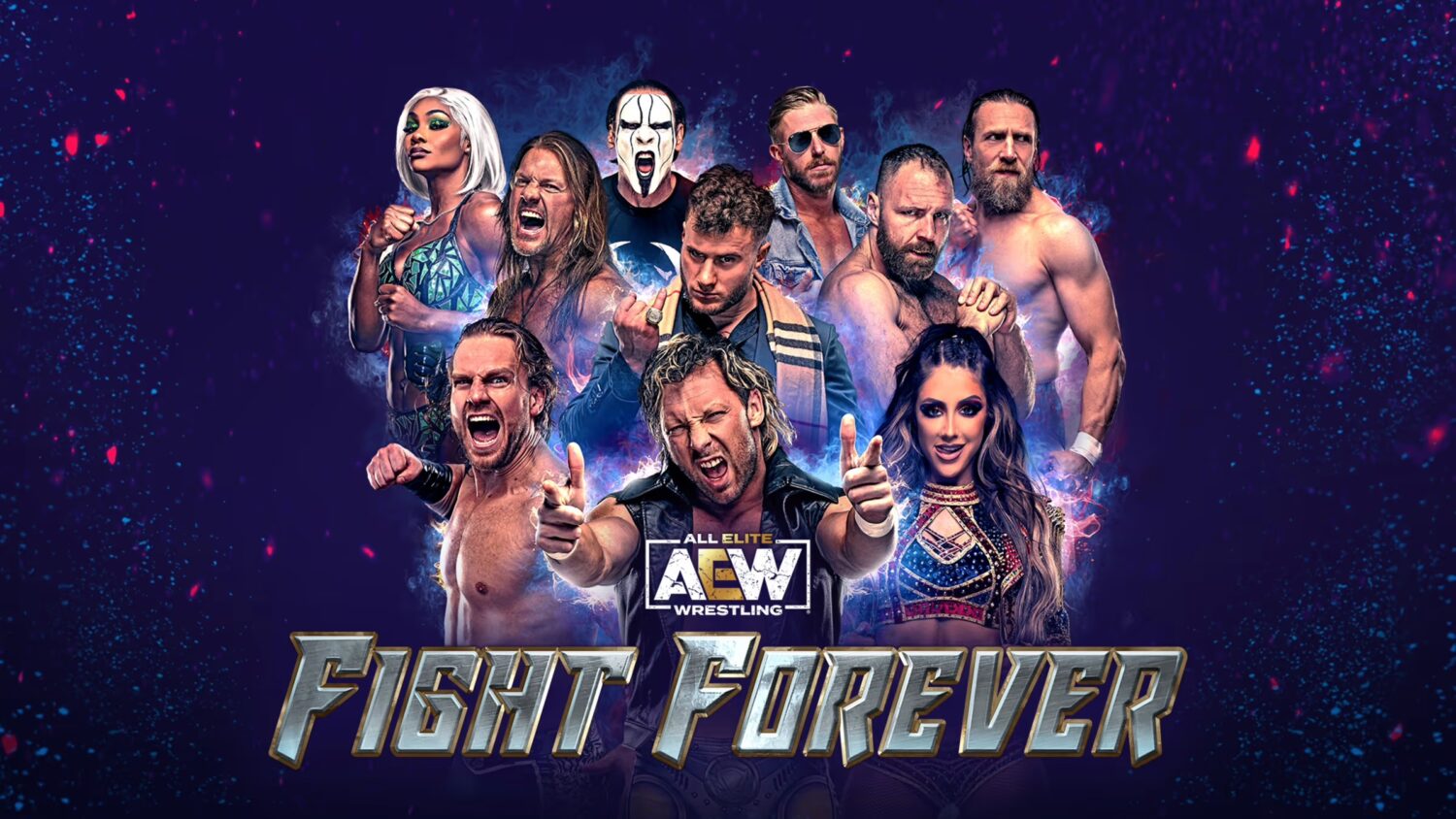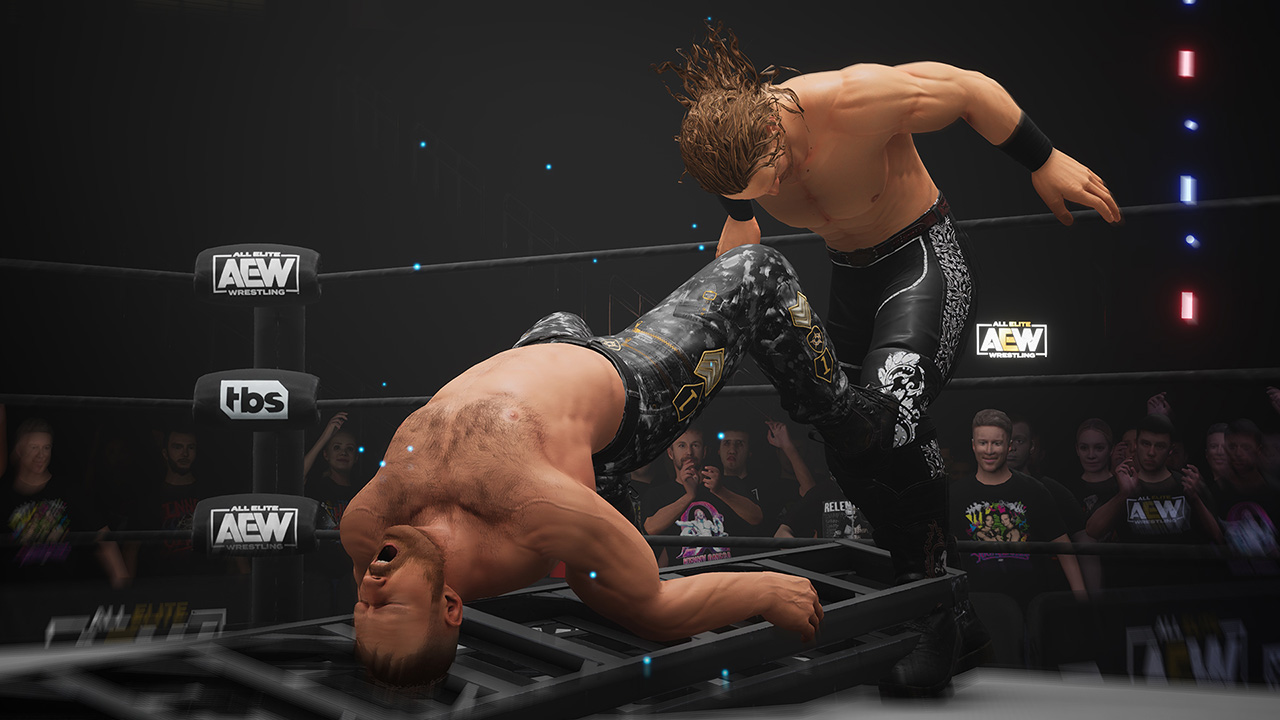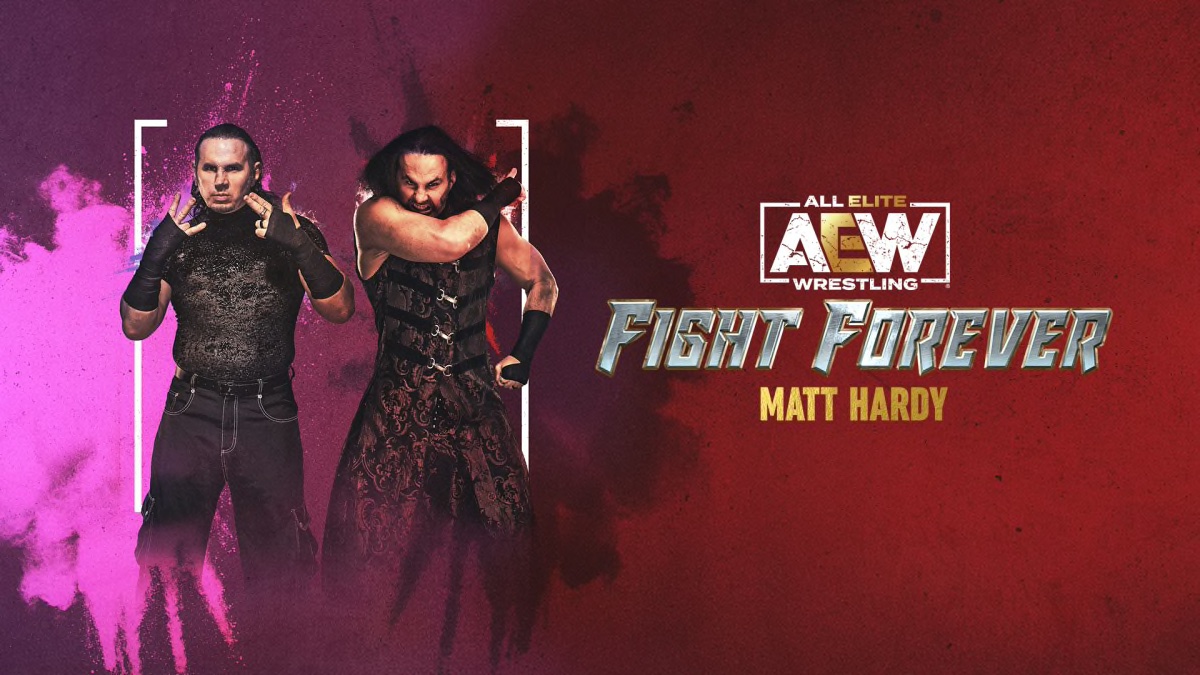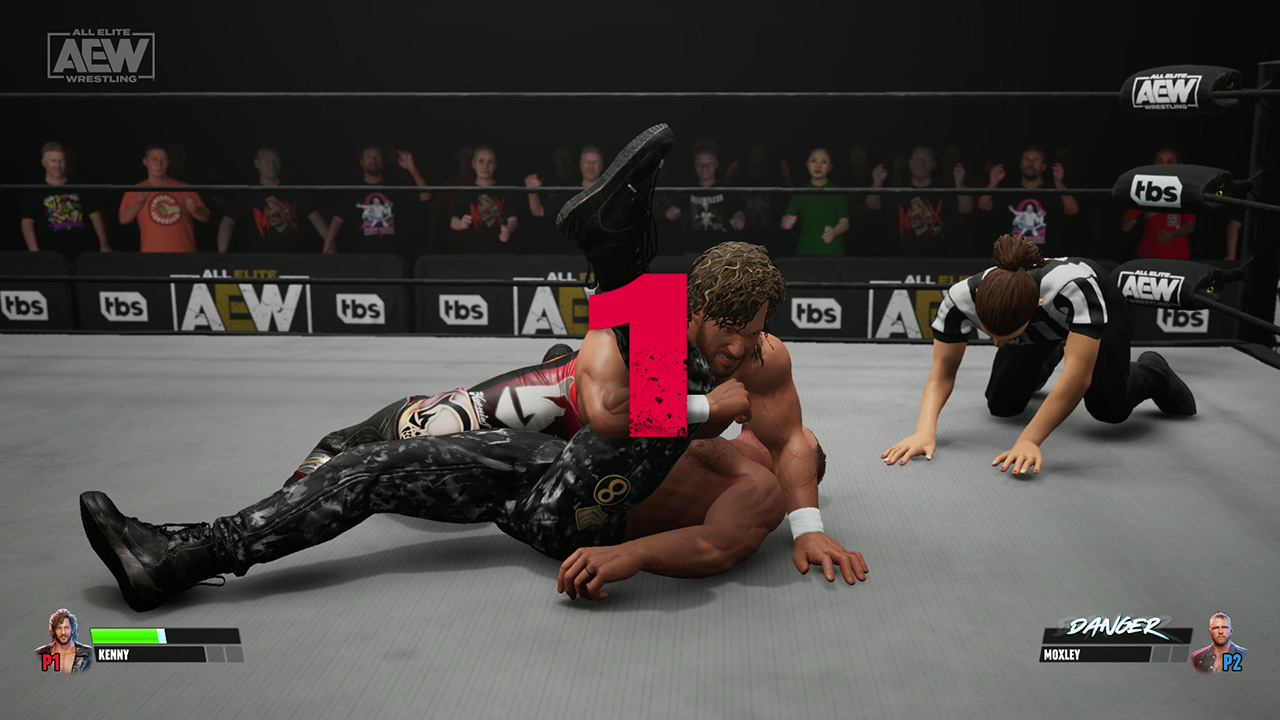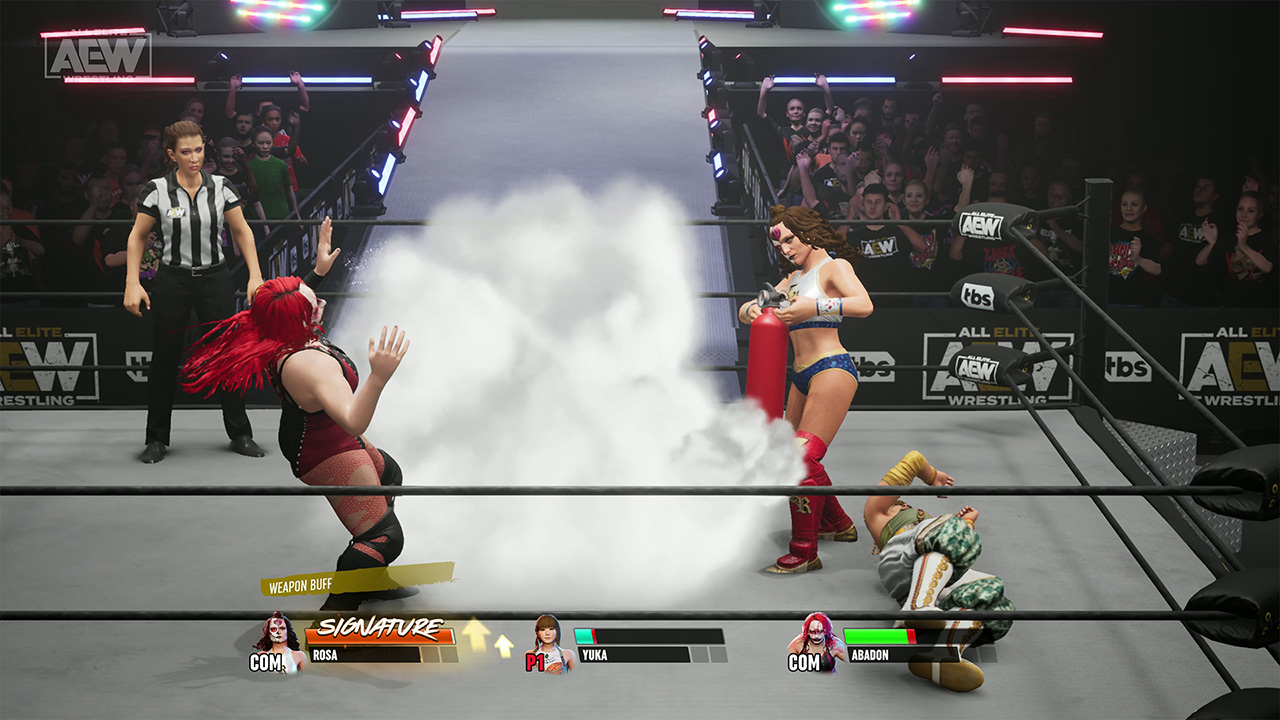"You've GOT to give the people what they want!"
I’m not reviewing AEW: Fight Forever with a vast knowledge of modern wrestling games. The developer, Yuke’s Co., made some of the more respectable WWE games, but I haven’t played them. Should I instead compare Fight Forever to Intellivision’s Body Slam! Super Pro Wrestling or the NES’s Pro Wrestling, both of which I have played extensively? Perhaps at another time and place.
I am, however, a dedicated fan of All Elite Wrestling. So, if you want to learn how AEW: Fight Forever stacks up against previous professional wrestling video games, return to Metacritic and click again. If, like me, you’re just an AEW fan who wants to know how fun it can be to become All Elite and take on your favorite (or not-so-favorite) wrestlers, let’s talk.
We’ll start by looking at the active roster, which contains nearly 50 wrestlers out of the box. You can tell the game has been in development for quite some time, as a few of the options are barely even around anymore: Yuka Sakazaki and Lance Archer, for example. Then there’s Cody Rhodes, who’s now in a different league. It makes sense that some of the newer talent wouldn’t be available, but wrestlers like Claudio Castagnoli and Jamie Hayter have been around long enough to have been included. Of course, DLC will surely address their absences, but considering Matt Hardy (Hardys?) costs $4.99 and the FTR tag pack costs $11.99, building your preferred stable could get expensive.
That said, there are more than enough wrestlers present to keep fans busy, and I imagine most will just pick and choose from the new wrestlers going forward.
Players will want to experiment with different wrestlers early on, as their abilities and move-sets can determine how easy they are to use. It’s surely fun to fly around the ring like the Young Bucks or the Lucha Bros, but it’s also harder when you’re new to this type of combat game which is more concerned with your mastery of striking and grappling. I had greater success when going with more grounded, physical wrestlers such as Miro and Kris Statlander, and used them to build up my skills and confidence.
This is important, because there’s a lot to learn to get good at AEW: Fight Forever. Sure, it’s possible to pick up the game and start fighting right away. There are difficulty levels designed to let you win despite your inexperience, and playing others at your level gives you some quality practice time. But to really enjoy the game requires you to master your preferred wrestler’s moves and counters, and to get a feel for the strategy of fully wearing down an opponent before applying your signature and finisher and going for the pin.
There’s a training option to help you get there, but it’s not much fun. Instead, I just hopped into as many matches as I could with the expectation to lose quite a bit. Pretty much every type of match an AEW fan could want is here: singles, tags, three-ways, ladder matches, lights-out matches, etc. There’s a Casino Battle Royal, although it doesn’t work like the real thing; new wrestlers enter only after others are eliminated, presumably due to technology limitations. There’s even a successful version of the infamous exploding barbed-wire death match. And although there’s no talk of Mimosa Mayhem, the Stadium Stampede is on its way. This will create an online 30-player battle royal of sorts that should prove to be as bonkers as the COVID-era event that inspired it. Horses? Pools? A drink at the bar? We’ll see.
Of course, all of this is more fun in multiplayer, be it local or online, provided you’ve got an opponent that’s close to you in skill level. For single-player action, the game’s clever story mode, Road to Elite, will be your focus. Here, you can take any wrestler on the roster or build your own and drive him/her through a year on the AEW roster.
Creating your own wrestler can take upwards of an hour if you pore over all of the options. Wrestling attire, street attire, build, tattoos, entrance music (“Brooklyn the Hole” is there, but Maki Itoh herself is not), entrance pose, and numerous other options presented to you, and it’s a bit clunky to get through. Your previous selections can negate upcoming options without making that clear, and the magnitude of wrestling moves is best left alone until you’ve learned exactly what they are and how/when they’re best used by which type of wrestler. After bringing Here Comes Hiner to life, I never bothered to use him. Instead, I took actual wrestlers through Road to the Elite. Eventually, I’ll start over on Here Comes and give him the run he deserves.
Road to Elite is not terribly long, but it does a good job of pushing the player through different types of matches and various backstage “skits.” Some of this is already outdated; AEW Dark still exists here, and there’s no Collision at the moment. These matches allow you to earn points and AEW cash that can be used to buff up your wrestler and unlock other items (such as historical videos and the beloved Aubrey Edwards). Points and cash can also be earned by playing odd mini games and participating in daily/weekly challenges.
So, there’s a ton of things to do in AEW: Fight Forever. It’s like an episode of Being the Elite and Dynamite smashed together, and AEW fans should feel right at home with its tone and anything-goes attitude. But there are some problems, most of which are in-ring, unfortunately. Foreign objects often create odd visual glitches during matches. The Switch has problems keeping up the frame rates, especially during online play and in handheld mode. Load times could use some picture-in-picture to keep us involved. The sparsely used commentary is oddly disruptive and often inaccurate (although the written lines during the story segments can be very funny).
Combine everything going on here, and AEW: Fight Forever becomes a disjointed but compelling wrestling game that expertly captures what AEW is all about. Its approach to the backstage antics will turn off some wrestling game purists, and user reviews have made it clear many “wrestling fans” will hate it just because the E stands for Elite, not Entertainment. Still, the action is diverse and fun (albeit glitchy), and the game works hard to keep you engaged as you improve your skill set. It all works better if you have someone to play with, but dedicating yourself to getting the best from the impressive roster should keep single players entertained until the inevitable follow-up is released.
Review: AEW: Fight Forever (Nintendo Switch)
Good
Fans of All Elite Wrestling should feel quite comfortable within the sometimes goofy but always engaging AEW: Fight Forever. Technically, there’s room for improvement, but the game nails the AEW tone and arcade gameplay that are the reasons many wrestling game fans have been seeking for quite some time.

